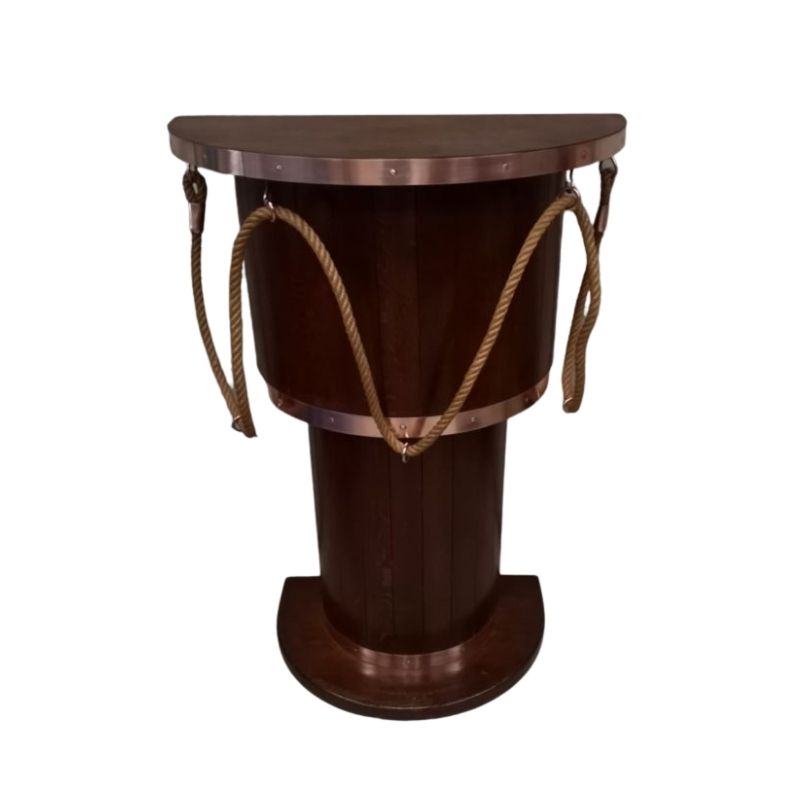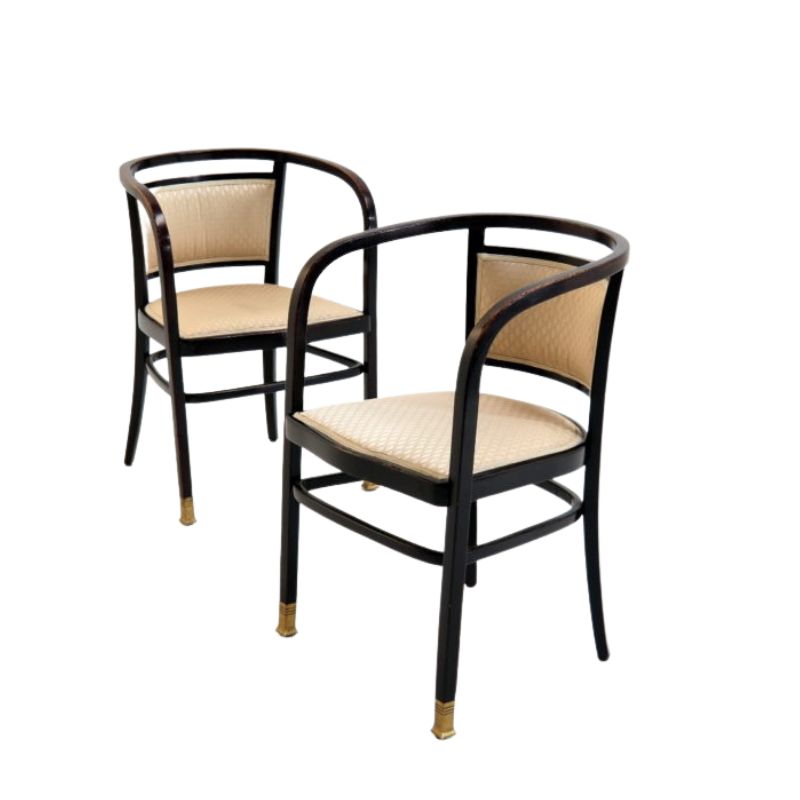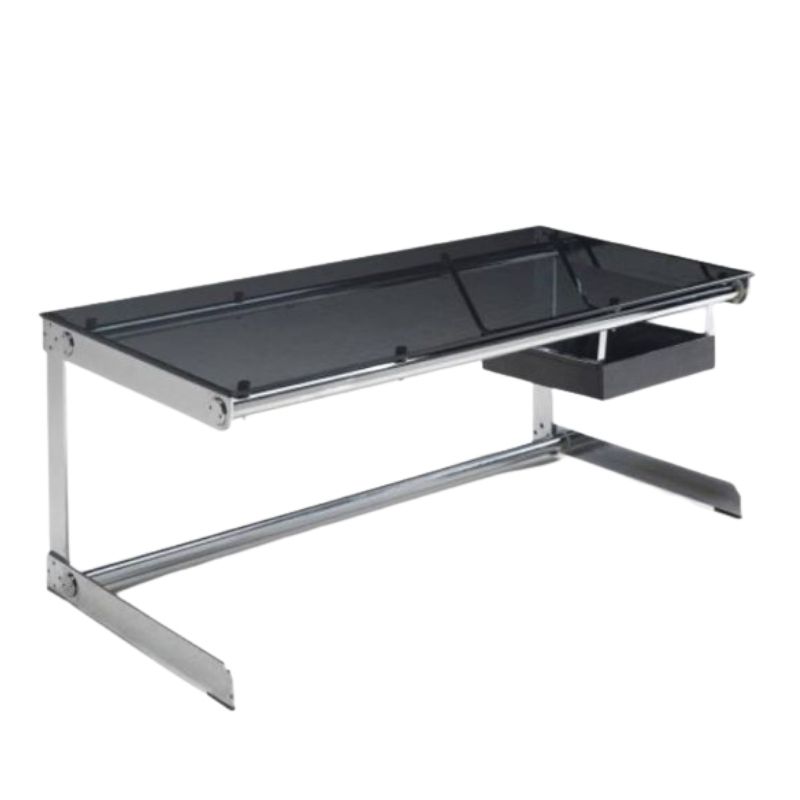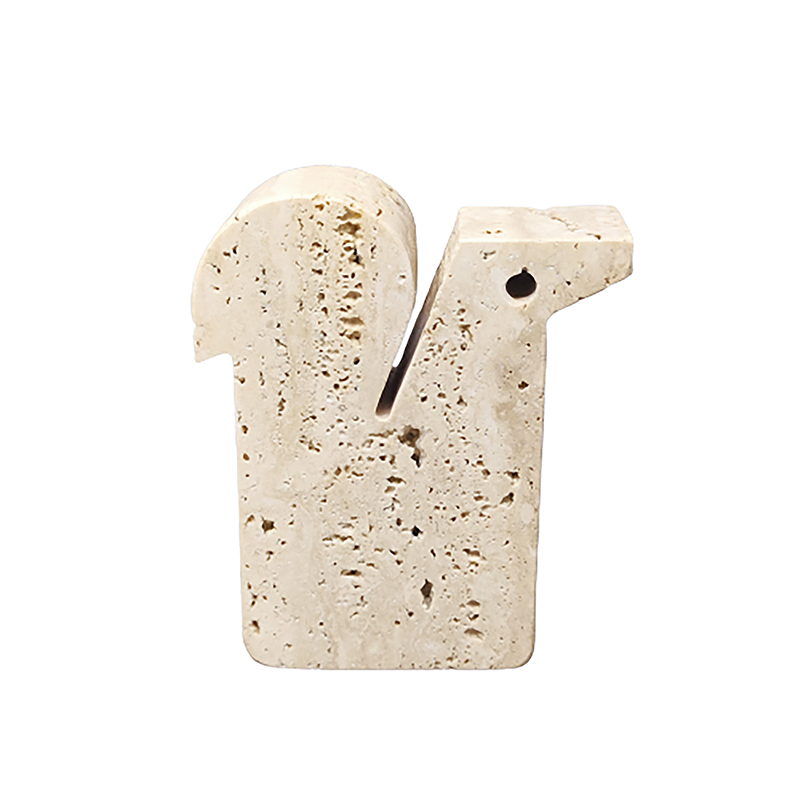Folks,
This is my first post, so my apologies if I am off topic or am in the wrong place. My wife and I just purchased a pair of good condition Wegner GE240 chairs, made of oak as far as I can tell. The wood needs some cleaning to brighten it up. Can you point me in the right direction -- I certainly don't want to do something to them that will detract from their value and great looks. Thanks much, Chris
Though
I am a woodworker, finishes are the area I am least confident of. Wegner's oak, ash and teak chairs seem to have been finished variously with wax or oil. I would be tempted to recommend mineral spirits, as a solvent for either of these finishes; a Scotchbrite pad wetted with paint thinner might produce a good effect, followed by reapplication of the original finish material.
However, if the surface is open-pored (oak or ash) and very dirty, this dirt might be more firmly lodged in the pores of the wood by this treatment. In that case, rubbing with dry Scotchbrite or with with 180 grit paper, followed by a thorough blasting with compressed air, could be a better approach.
A lacquer or varnished finish would respond to the first method, using clean rags or very fine Scotchbrite; sanding would be done only if the hard finish needed to be reapplied.
I would wait to hear other advice than mine, before proceeding. . .
As you mentioned Steven...
I fear that by using thinner the dirt might be absorbed and more firmly lodged in the pores of the wood by the first treatment. I would follow your second advise: rubbing with dry Scotchbrite or with with 180 grit paper, followed by a thorough blasting with compressed air. I recently "cleaned" our Borge Mogensen oak furniture after 25 years of intensive use. Sanding it carefully with 180-200 grit (In the direction of the grain! of course) and mineral oil did wonders.
Sounds good.
What finish did the Mogensen pieces have, if any? And how would one determine for sure what was applied originally; would wax appear different from oil after many years ?
I guess the dry method would be best for these minimal finishes, or raw wood; a wet procedure only for a hard finish. . .
Mineral oil is a good pure "food" for wood, I think; it's what is recommended for kitchen utensils and cutting boards, isn't it ?
NNOOOOOOOO!!!! please read this
Hi there to you all
As a person who regularly restores Wegner furniture and have done so for 11 years now you are all somewhat wrong!
Do not use thinners or oil on oak chairs as both with damage their value.
Oil will make the wood really dark yellow and not resemble the original which was, soap washed, natural or varnished.
The varnished versions are easy to identify as they have scratches that appear white. Natural and soap washed both have patina that is "soft" in look and feel. you can feel the grain of the timber on those 2 while the varnished versions you can not.
To restore them you need to be more specific to what you are trying to achieve as there are a couple of options open to you.
You can wash them with wood soap, same stuff you use on real wooden floors. It does not contain sulphour which dries the wood out. It helps to treat the wood and gives it a soft whiteish finish. Very hard to see. It was the same offered by GETAMA.
You can also give them a harder scrub using nylon scourers to get rid of any dark/ black areas which are just dirt from hands etc. Normally the front of the arm rest!
If you want furnther instructions please let me know
.
Fumed oak(ammonia fumes) was used on Wegner furniture,also the only way to make old wood "new" is to remove the surface with abrasion down to fresh wood(I have seen SO MUCH damage)it must be done with a very light/deft hand.I accept mellow old wood, but each has its beauty.I love my mellow oak Y backs in unbroken production since 1950...not many designers can say that...
From where
does your information come, that Wegner used fumed oak on any of his pieces. . .?
For those not familiar with it, this was a method popular c 100 years ago, in the Arts & Crafts period; Stickley and others darkened their quartered oak by the fuming process. This finish (color layer) would be highly vulnerable to destruction by sanding.
Thanks for the corrections, Simon -- I should have thought to question you at once.
In speaking of "The Chair" the authors of "Contemporary Classics" say "Oak or teak was used for the chair's wooden frame, finished wirh oil or wax, respectively." I see now that this must be an error, with the materials reversed. . .
what are you trying to achieve by restoration is the questions
Firstly the above discussion is straying into the article posted in New York times about how original does a piece need to be to remain original and valuable
I think it is important to set your self a target for what you are trying to achieve in restoration.
Are you wanting the chair to be as it came out the factory looking fresh and unused or simply to clean it so that you can carry on using it.
As azuredchicken correctly points out the color og his wishbone chair is a wonderful mellow. This is a color that the chairs / wood absorbs with time and can not be replicated.
PATINA as many call it will be damaged if you sand the surface off as you are removing the top layer where the color is lodged.
Now there is a big difference between patina and dirt. It takes a good eye to see the difference and I can only say that the difference to me is a shade of darkness that looks to be in certain areas. However this can be removed by gentle washing with the wood soap or on harder woods like teak by using the nylon scourer.
I use a special harsh method that dissolves the dirt and then scrubbing it while the timber is wet. It can not be used on all so
DONT TRY THIS AT HOME
What I always say to my clinets is that restoration of a chair is simply bringing to it best potential.
Re-upholstering the areas with a type of fabric that is not out of character and likewise with the wood.
The option of waxing oak is possible but once you have started you must carry on like with sanding.
Waxing has the efect of making oak more yellow in color but as it's a surface treatment it will wear off and therefore need repeated treatments over the lifespance of the piece.
Oil is used for teak as it enhances the natural grain of the wood while treating the wood. It was however not a treatment on oak as it turns it dark.
It is not to say that if you are after a darker look you can not use it, it is just to say that once the treatment has been done it is very difficult to remove / undo.
Varnish is a way to seal the timber from any absorbtion of color and one that with sanding will need to be completed until the wood is totally void of varnish. The problem in varnish is that it settles into the pores of the timber. It also wears off over time and therefore you occasionnaly see the front of armchairs where the varnish has been worn through.
It is near on impossible to repair correctly unless you have access to a spray shop where it can be aplied in an even amount and bake sealed.
for my humble 2 pence worth it is important to decide upon how much or little you need to do in order to achieve the look once you are complete.
As Azured says many a pieces are damaged by going at it with sanders (expecially rotary sanders) shame on black & decker! but some are enhanced if you use fine grain.
There is only my wifes soft skin that comes close to the softness of a wegner oak chair restored and finished in 400+ wet n dry paper!

If you need any help, please contact us at – info@designaddict.com










